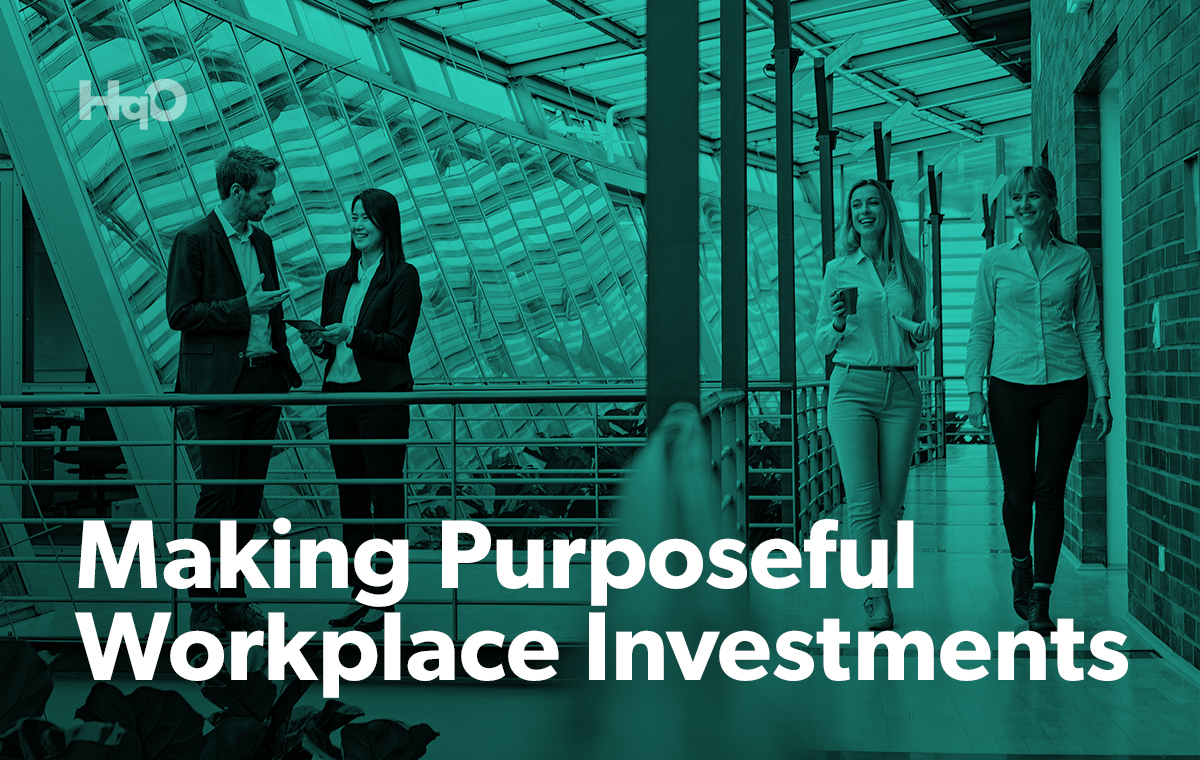The experiences that your property or portfolio offer hold more weight than ever before, especially when they come to the workplace.
Between the COVID-19 pandemic and its consequential happenings (i.e. lower building occupancy rates, changes in the way people work, and the Great Resignation putting employee demands front and center), landlords have a lot to consider when it comes to managing their properties.
First and foremost, they need to look at the trends — particularly those impacting tenant companies leasing space in their buildings. According to HqO’s State of Workplace Experience in 2022 report, 68% of employers have redesigned their workspaces to support modern employee needs, while 28% plan to implement redesigned spaces in the next two years. Similarly, 86% of employers have already implemented a flexible/hybrid working model since the beginning of the pandemic, and 14% plan to implement hybrid in the next two years.
This data reveals that traditional work environments are not enough to support modern employee needs. In fact, 92% of landlords agree that employees will expect more from the buildings they work in moving forward.
Managing Employee Expectations
So, exactly what do employees expect? And furthermore, how can landlords keep tenants engaged with their buildings when the vast majority of the workforce has already adopted hybrid work models?
As a recent New York Post article states: it’s all about product, not price.
“ […] Some firms are forking over upwards of $100, $200, and even $300 per foot to get perched at the priciest properties. That’s because tenants are ‘picky’ and spending on quality spaces even if they are smaller than prior offices. ‘It would have been 20,000 square feet before, and now it’s 10,000 or 12,000 square feet,’ said Peter Braus, Managing Principal of Lee & Associates NYC. ‘They spend the same, but the quality level is higher and the dollars per foot are higher.’”
And, we can’t talk about adding quality to workplace properties without defining what “quality” means. And, in today’s economy, quality is all about how you make people feel. Said in another way, quality is all about experiences.
Internationally-acclaimed authors Joseph Pine II and James H. Gilmore define and explore what they’ve dubbed an “experience economy” in their best-selling book, The Experience Economy: Competing for Customer Time, Attention, and Money. An experience economy, they explain, is an economy in which companies sell memorable experiences to customers instead of just a product. This business strategy is the secret behind keeping products and services competitive with modern consumers.
However, it’s important to note that we didn’t always live in an experience economy. This new-age era follows the natural trajectory of economic offerings over time, which can be broken down into the following four stages:
- Commodities: Commodities encapsulate the natural materials (such as animals, minerals, and plants) that cannot be differentiated, and thus can be sold in bulk based on supply and demand.
- Goods: Goods occur when commodities are used to create distinctive, tangible products that can then be sold based on a predetermined value.
- Services: Services go beyond a physical, tangible product. Instead, they provide activities that are personalized to the consumer, which are often valued higher than the goods required to receive them.
- Experiences: Experiences create the newest, and perhaps the most meaningful, economic offerings. These occur when a business uses both services and goods to engage an individual in a memorable way over time.
Experience Platforms
Pine’s latest research adds yet another layer to the stages of economic offerings: experience platforms.
“Platforms — places where buyers and sellers come together to exchange money for offerings — are not a new phenomenon, and have long existed in the physical world,” Pine wrote in HqO’s recent State of Workplace Experience in 2022 report. “Think of farmers’ markets (for commodities), shopping centers (for goods), strip malls (for services), even theme parks (for experiences). Digital technology amps up the power and network effects of such transactional platforms, enabling millions and potentially billions of buyers to connect with a boundless number of sellers.
“[…] And, increasingly, digital platforms offer experiences. Think of Airbnb, which originally sold access to a sofa, a room, a house, but in 2016 created Airbnb experiences to enable those staying in Airbnb host properties to connect with local experience stagers, particularly those that made guests feel like a local in their visited locale. And of course in 2020 the platform pivoted to digital experiences, enabling Airbnb to continue garnering income while saving the businesses of many companies that would have gone under without visitors, and saving the sanity of many consumers that would not give up their experiences.”
His findings about technology resonate with our own research throughout the report, after interviewing both landlords and employers around the world about their recent workplace investments. In fact, of all the tools and amenities companies are investing in, workplace experience platforms are one of the most mission-critical: 72% of employers agree or strongly agree that workplace experience and engagement tools will be a critical element of successful offices in the future.
Thus, in order to best serve and support tenants in today’s landscape, landlords and property teams need to provide more tech-enabled workplace environments. This makes a lot of sense, especially since the progression of economic value for the workplace has closely mirrored Pine’s theories for decades — with the commodities associated with work transforming over time into more memorable, meaningful experiences.
Want to learn more about creating better workplace experiences? Download our latest report today.



